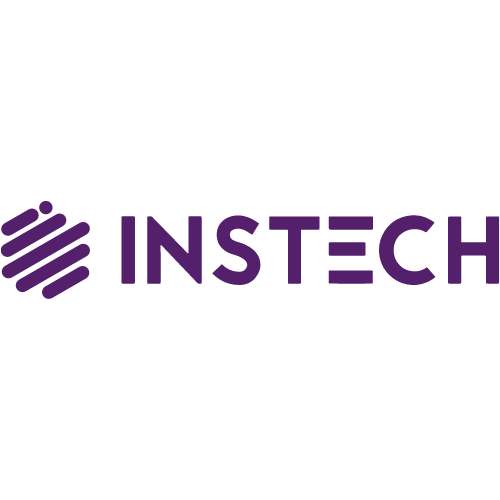This is the third article in a series looking at operational modernisation within the insurance industry. You can read the previous articles at:
- The Modernisation Conundrum
- Wrapper Technology – The Solution To The Modernisation Conundrum?
The Blueprint Two London Insurance Market Modernisation Programme brings significant regulatory implications for the insurance industry. The programme is part of a larger effort to increase efficiency and reduce operational costs associated with the insurance business in London and the UK. The programme aims to improve the ease and speed at which new products are launched, the accuracy and speed of risk reporting and claims settlement, and the ability to respond quickly to changes in regulation. There are however a number of regulatory implications that insurers need to be aware of. These include an increased emphasis on data quality, improved customer transparency, increased surveillance and monitoring of markets, as well as a focus on strengthening existing regulations.
Insurers also need to consider how they will ensure compliance in an ever-changing regulatory environment. This includes developing processes around data management, insurance risk assessment and capital adequacy requirements. Additionally, insurers must be aware of the impact that technology can have on their operations and consider the implications for data privacy when deploying new solutions.
The insurance industry has been around for hundreds of years, and in that time, very little has changed in terms of how we trade, particularly within the London Market. But with the launch of Blueprint Two, the London Insurance Market Modernisation Programme, it is becoming increasingly clear that no change is not an option for either insurance companies or insurance brokers. This new initiative is a huge undertaking, and the effects it will have on the industry are yet to be seen. But one thing is certain, Blueprint Two is the Griffin in The Room.
What is Blueprint Two?
The Blueprint Two London Insurance Market Modernisation Programme, launched in 2020, seeks to set the foundations to modernise and disrupt the insurance industry. This includes streamlining processes, introducing new technologies and increasing competition through direct sales models. With many of these changes, come challenges for both Insurance Companies and Brokers when it comes to Operational Resilience. As the insurance market moves towards digital transformation, both companies and brokers need to consider their own strategies for staying resilient in a volatile environment. Operational Resilience is a key factor for any business’s success; it provides the foundation for businesses to stay agile and respond quickly to changing conditions. For example, effective Operational Resilience requires a firm-wide approach that enables businesses to anticipate change and develop strategies that can quickly adjust to these changes. It also requires businesses to invest in technology that can keep up with customer demands as well as changing regulations. Finally, Operational Resilience must also include a sound disaster recovery plan that can quickly get a business back on track after any disruption or unforeseen circumstances. With the implementation of Blueprint Two, it is clear that no change is not an option for either Insurance Companies or Brokers.
What does it mean for Insurers?
Blueprint Two changes the way that technology interacts with central settlement and will force insurers to look at how they manage data, how they access risk and whether their capital is right for the market conditions. Insurers need to focus on operational resilience by having a robust strategy in place. They must take steps to ensure they have the requisite capability, security, scalability and reliability of IT systems. To do this, insurers should create better business continuity plans, have a comprehensive backup policy and perform regular penetration tests on IT infrastructure. Insurers must also focus on data governance, making sure all data stored is compliant with local regulations.
All of these measures will help create an environment where insurers are operationally resilient and able to respond quickly to changing customer needs. Additionally, insurers should ensure they have robust cyber security measures in place to protect customer information from malicious attacks. With Blueprint Two in place, insurers must be proactive in order to ensure they remain competitive in the changing insurance landscape.
What does it mean for brokers?
New forms of digitisation resurfaces broker’s concerns around disintermediation, and as a result, for Insurance Brokers, Blueprint Two places a strong emphasis on Operational Resilience. This is primarily in order to ensure that Insurance Brokers have the necessary processes and infrastructure to support digital transactions, increase security and prevent downtime. Operational Resilience also requires that adequate staffing and technical resources are in place to provide a high level of customer service and respond to changing business needs in a timely manner.
With this in mind, Insurance Brokers need to evaluate their current operations to ensure they can adequately meet these demands and establish continuity in order to remain competitive in a rapidly changing marketplace. In addition, they should review their current cyber security measures and implement additional controls to prevent data breaches and mitigate reputational risk. Moreover, robust IT infrastructure needs to be implemented in order to scale up capacity, improve efficiency and enhance customer service. Finally, insurance companies should ensure their operational procedures are regularly monitored, updated and communicated to their staff.
What are the regulatory implications?
Operational change brings with it a need to ensure the FCA’s Accountability Framework and Senior Managers Regime are given due regard. It is also important that firms are focused on increasing operational resilience within their business models. Operational resilience is defined as the ability of firms to deliver services in a dynamic environment, protect their customers, withstand disruption and continue providing effective services in times of uncertainty or crisis. The related rules on Outsourcing and Critical Third Parties are also of great relevance to firms.
Insurance companies and brokers must invest in technology, data analytics, automated processes and appropriate risk controls in order to maintain operational resilience. Furthermore, they should review their supply chain arrangements and mitigate against any associated risks. They should also ensure that any operational changes are well-tested before being implemented across their business, as this is critical for operational resilience in times of significant change or disruption. It is essential for insurance companies and brokers to develop, implement and maintain a robust operational resilience strategy to cope with any unforeseen circumstances. This will not only enable them to remain competitive in an ever-changing environment but also provide a platform for future growth within the industry.
What are the technology implications?
Some of the insurance market technology is very old and not compatible with the Blueprint Two digitised platform. Insurers that are in Run-Off and do not have the revenue that would allow expensive change or even small technology configurations will have difficult decisions to make. The combined effect of these issues is that a significant number of markets may need to move away from existing processes and onto the new digital standards being developed. This risks placing an additional burden on operational resilience within these organisations, who must be able to move quickly, accurately, securely, and cost effectively between disparate systems in order to remain competitive. Operational Resilience cannot be considered optional for insurers but an essential factor when making decisions related to the adoption of new technologies such as Blueprint Two. If a company does not have a solid operational resilience strategy in place, then it risks being left behind as the insurance market shifts towards a more digital format. Insurers need to be cognizant of the potential for cyber threats when migrating data between systems which could lead to significant losses if not handled correctly. Brokers must also ensure they are aware of their operational resilience requirements as they work with clients across different platforms while navigating the digital transition.
What are the risk implications?
Most people see Blueprint Two2 as an operational and technology play, whereas, once the broader implications become clearer, it’s apparent that there will need to be investment on compliance impact, regulatory impact, risk impact and capital impact.
So, the question has to be asked, after 335 years are we finally going to get substantive change in this wonderful market of ours?
Conclusion
By utilising the technology advancements in Operational Resilience, we are presented with the opportunity to finally transition the market to a better version of itself. Doing nothing is not an option for Insurance companies or Insurance Brokers, as the risk implications are just too great. Without operational resilience, processes cannot be optimised, and risks cannot be managed adequately. Therefore, it’s clear that both insurers and brokers must invest in operational resilience if they hope to remain competitive in such a rapidly changing industry.
As part of their efforts to increase operational resilience, insurers should focus on identifying and minimizing potential risks, as well as reducing their dependence on manual processes whenever possible. They should also look into automating processes where possible so they can reduce costs associated with manual labour while at the same time making operations more reliable.
For brokers, ensuring operational resilience means finding ways to streamline their existing processes and automate them whenever possible. They should also explore ways to minimize manual operations such as providing customers with online portals where they can access information about their insurance policies or submit claims electronically. Ultimately, by investing in operational resilience initiatives both insurers and brokers can ensure they have the tools necessary to make sure their businesses remain competitive.
If you would like to discuss any aspect of the operational change implications of modernisation for your business, please speak with the author or any other member of the ICSR team.
Related Articles
Event: London Market Reform – Why Embracing BluePrint Two Makes Sense
Please join us for a market briefing on Thursday 20th April when we look at the impact of Blueprint Two London market reforms on insurance companies and brokers writing and placing insurance risks in the London subscription market.
The Modernisation Conundrum
For insurance companies and brokers, policy and broker administration systems are the software platforms that power their business. Lance Grant looks at the process of change to these systems.
Wrapper Technology – The Solution To The Modernisation Conundrum?
With modernisation of the insurance market in London upon us, many companies are running with multiple legacy policy and broker administration systems, and the cost of full digital transformation can be daunting. Could wrapper technology be the solution?












